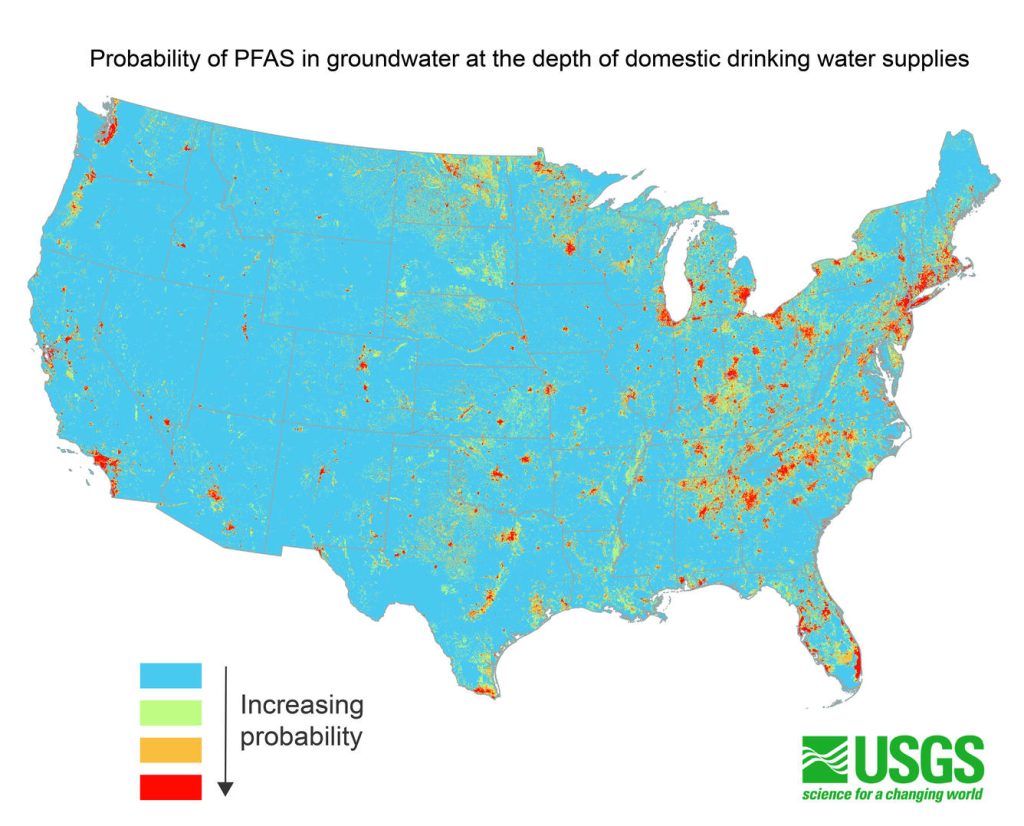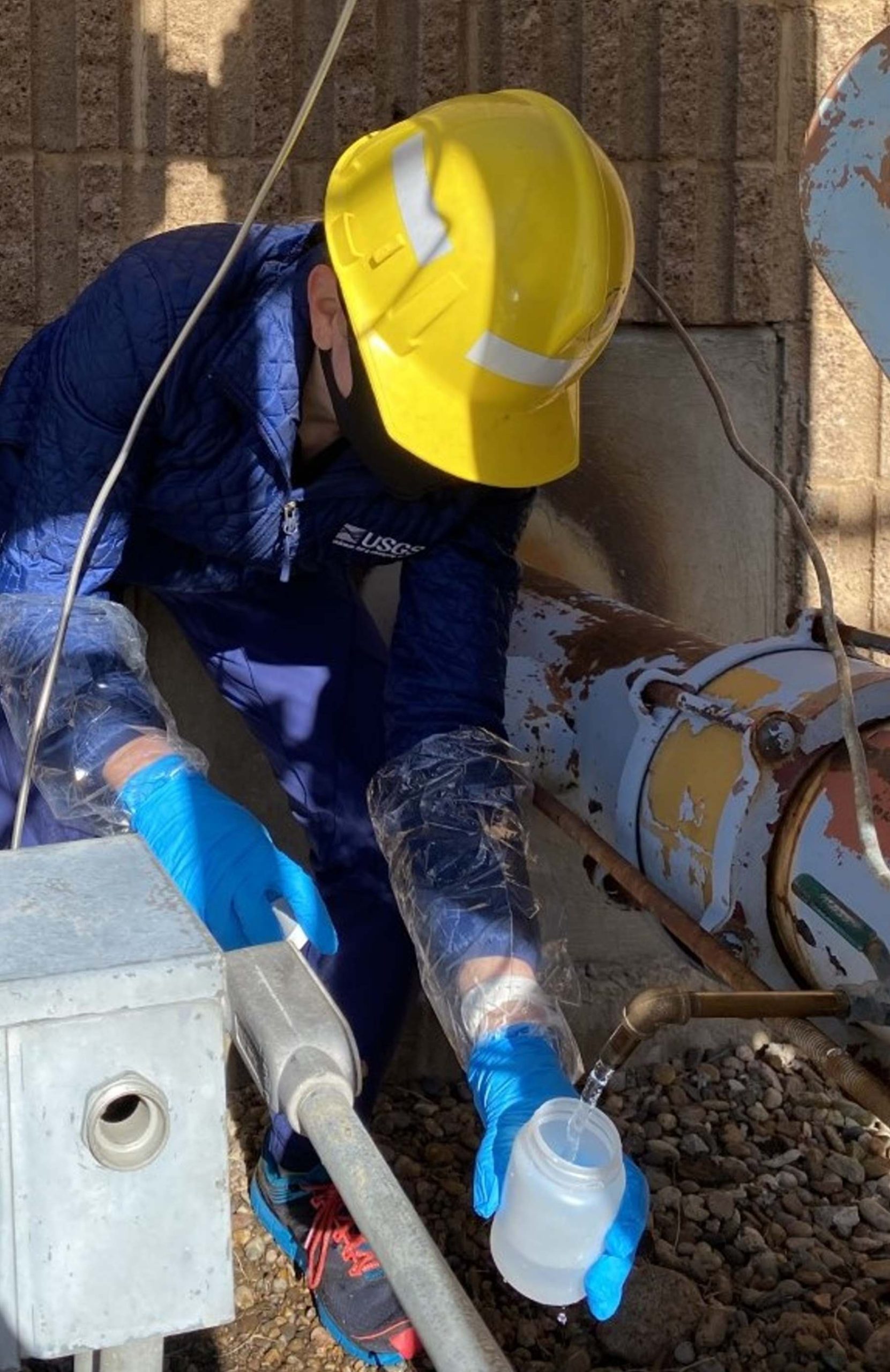- Over 71 million Americans may use PFAS-contaminated groundwater.
- “Forever chemicals” detected nationwide in untreated water supplies.
- USGS provides first national estimates of PFAS in drinking water.
- Exposure to PFAS may pose health risks, according to the EPA.
November 5, 2024 — A recent study by the U.S. Geological Survey (USGS) reveals that approximately 71 to 95 million people in the contiguous United States rely on groundwater containing detectable concentrations of per- and polyfluoroalkyl substances (PFAS), also known as “forever chemicals,” for their drinking water supplies. This accounts for more than 20% of the country’s population.
reveals that approximately 71 to 95 million people in the contiguous United States rely on groundwater containing detectable concentrations of per- and polyfluoroalkyl substances (PFAS), also known as “forever chemicals,” for their drinking water supplies. This accounts for more than 20% of the country’s population.
First National Estimates.
USGS scientists have provided the first national estimates of PFAS occurrence in untreated groundwater supplying public and private wells. The study’s predictive model helps the public, water suppliers, and regulators understand the potential for PFAS contamination, guiding future studies and informing strategic planning for water resources.
“This study’s findings indicate widespread PFAS contamination in groundwater that is used for public and private drinking water supplies in the U.S.,” said Andrea Tokranov, USGS research hydrologist and lead author of the study . “This new predictive model can help prioritize areas for future sampling to help ensure people aren’t unknowingly drinking contaminated water.”
. “This new predictive model can help prioritize areas for future sampling to help ensure people aren’t unknowingly drinking contaminated water.”

 .
.States with Highest Potential Exposure.
Florida and California have the largest populations relying on public water supplies with potentially contaminated groundwater sources. For private wells, Michigan, Florida, North Carolina, Pennsylvania, New York, and Ohio have the largest potentially affected populations.
In Massachusetts, the source water for 86 to 98% of people relying on groundwater from public water supplies could be contaminated with PFAS. In Connecticut, 67 to 87% of those using groundwater from private wells may be affected.

 .
.Understanding PFAS and Health Risks.
PFAS are synthetic chemicals used in various common applications, from non-stick cookware and fast-food packaging to firefighting foams. Often called “forever chemicals,” they do not easily break down and can accumulate over time, raising concerns for drinking water quality. According to the U.S. Environmental Protection Agency (EPA), exposure to certain PFAS may lead to adverse health risks. Some studies have linked exposure to PFAS to a range of health effects, including cancer, thyroid disease, and decreased fertility.
The EPA has established legally enforceable maximum contaminant levels for six types of PFAS in drinking water. While public water supplies are regulated, private well users are responsible for maintaining, testing, and treating their drinking water.
Predictive Model and Testing.
The USGS team analyzed 1,238 groundwater samples to derive these estimates and assessed factors like urban development and well depth impacting PFAS occurrence. A detailed machine learning model identified geographic areas with a higher likelihood of contamination, combined with data on groundwater reliance to estimate affected populations.
There are over 12,000 types of PFAS, not all of which are detectable with current tests. The study tested for 24 common types, with the most frequently detected being perfluorobutane sulfonate (PFBS), perfluorooctane sulfonate (PFOS), and perfluorooctanoate (PFOA).
Accessing the Study and Resources.
The USGS published an interactive online map showing probability estimates of PFAS occurrence . These predictive results are intended for evaluation at state, regional, and national scales rather than individual households. Testing remains the only way to confirm the presence of contaminants.
. These predictive results are intended for evaluation at state, regional, and national scales rather than individual households. Testing remains the only way to confirm the presence of contaminants.
The new USGS study was published in the journal Science . For more information on PFAS regulations and testing options, visit the EPA’s website on addressing PFAS or contact state officials or water suppliers.
. For more information on PFAS regulations and testing options, visit the EPA’s website on addressing PFAS or contact state officials or water suppliers.
~~~
Images.
All images in the public domain. Top image depicts testing for PFAS .
.




Leave a Reply